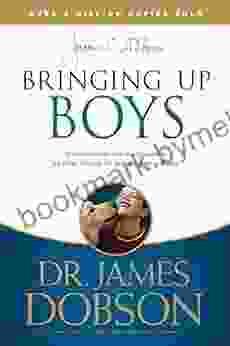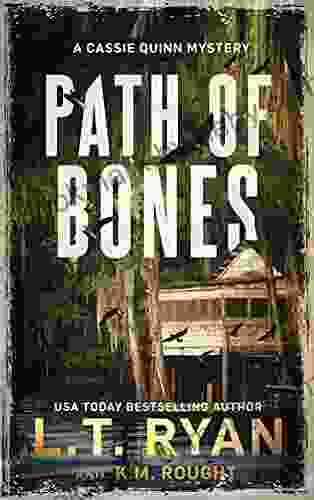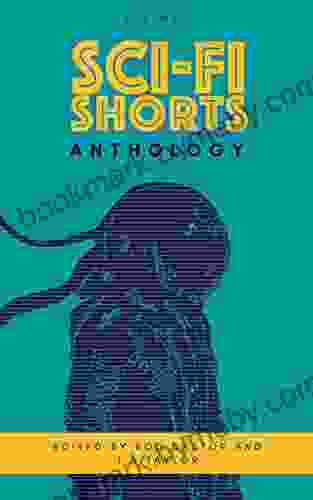How China Escaped Shock Therapy: The Untold Story of the Transition from Mao to Deng

4.7 out of 5
| Language | : | English |
| File size | : | 2911 KB |
| Text-to-Speech | : | Enabled |
| Screen Reader | : | Supported |
| Enhanced typesetting | : | Enabled |
| Word Wise | : | Enabled |
| Print length | : | 358 pages |
In the early 1990s, as the Soviet Union collapsed and Eastern Europe embraced capitalism, many economists and policymakers believed that China would follow suit. After all, China was a communist country with a centrally planned economy. But to everyone's surprise, China did not adopt shock therapy. Instead, it pursued a gradual and pragmatic approach to reform.
How did China escape shock therapy? And what lessons can we learn from its experience?
In his groundbreaking book, How China Escaped Shock Therapy, Yuen Yuen Ang argues that China's escape from shock therapy was due to a combination of factors. First, China had a strong and stable government that was committed to reform. Second, China had a large and diversified economy that was not heavily dependent on heavy industry. Third, China had a strong cultural tradition of saving and investment.
Ang's book is a must-read for anyone interested in China's economic development or the history of the post-Cold War era. It is a well-written and deeply researched book that sheds new light on one of the most important economic transformations of our time.
China's Gradual Approach to Reform
In the early 1980s, Deng Xiaoping launched a series of economic reforms that gradually dismantled China's centrally planned economy. These reforms included:
- Allowing farmers to sell their produce on the open market
- Opening up special economic zones to foreign investment
- Reducing government subsidies to state-owned enterprises
- Encouraging private enterprise
Deng's reforms were gradual and pragmatic. He did not attempt to dismantle the entire centrally planned economy overnight. Instead, he allowed the market to play a greater role in the economy while still maintaining a strong role for the state.
This gradual approach to reform allowed China to avoid the social and economic chaos that occurred in other post-communist countries. For example, Poland and Russia both adopted shock therapy policies in the early 1990s. These policies led to sharp declines in output, high unemployment, and widespread poverty.
China's gradual approach to reform also allowed it to maintain a high rate of economic growth. In the 1980s and 1990s, China's economy grew at an average rate of 10% per year. This growth was driven by a combination of factors, including increased foreign investment, increased exports, and a growing domestic market.
The Role of the Government
The Chinese government played a crucial role in China's escape from shock therapy. The government provided a stable political environment that allowed for economic reform. It also invested heavily in infrastructure and education, which helped to create a more favorable environment for businesses.
In addition, the government played a role in managing the transition from a centrally planned economy to a market economy. For example, the government helped to create new markets and to provide social safety nets for those who were displaced by economic reform.
The Chinese government's role in economic reform was not always positive. For example, the government sometimes intervened in the economy in ways that created distortions and inefficiencies. However, overall, the government's role was essential in helping China to avoid shock therapy and to achieve a high rate of economic growth.
The Importance of Culture
China's cultural tradition of saving and investment also played a role in its escape from shock therapy. Chinese households have a high saving rate, which has provided a source of capital for investment. In addition, Chinese culture values education, which has helped to create a skilled workforce.
China's cultural tradition of saving and investment is deeply rooted in its history. For centuries, Chinese families have saved for the future. This saving habit has helped China to weather economic downturns and to invest in its future.
China's cultural tradition of saving and investment is also supported by its government. The government encourages saving through a variety of policies, such as tax breaks and social security programs. The government also invests heavily in education, which helps to create a skilled workforce.
Lessons for Other Countries
China's experience with economic reform offers valuable lessons for other countries. First, it shows that it is possible to transition from a centrally planned economy to a market economy without resorting to shock therapy.
Second, it shows that the government can play a positive role in economic reform. The government can provide a stable political environment, invest in infrastructure and education, and help to manage the transition from a centrally planned economy to a market economy.
Third, it shows that culture can play a role in economic development. China's cultural tradition of saving and investment has helped it to achieve a high rate of economic growth.
Of course, China's experience is unique. There is no one-size-fits-all approach to economic reform. However, China's experience offers valuable lessons for other countries that are seeking to transition from a centrally planned economy to a market economy.
China's escape from shock therapy is a remarkable story. It shows that it is possible to transition from a centrally planned economy to a market economy without resorting to shock therapy. It also shows that the government can play a positive role in economic reform. Finally, it shows that culture can play a role in economic development.
China's experience offers valuable lessons for other countries that are seeking to transition from a centrally planned economy to a market economy. It is a story of hope and inspiration.
4.7 out of 5
| Language | : | English |
| File size | : | 2911 KB |
| Text-to-Speech | : | Enabled |
| Screen Reader | : | Supported |
| Enhanced typesetting | : | Enabled |
| Word Wise | : | Enabled |
| Print length | : | 358 pages |
Do you want to contribute by writing guest posts on this blog?
Please contact us and send us a resume of previous articles that you have written.
 Book
Book Novel
Novel Page
Page Chapter
Chapter Text
Text Story
Story Genre
Genre Reader
Reader Library
Library Paperback
Paperback E-book
E-book Magazine
Magazine Newspaper
Newspaper Paragraph
Paragraph Sentence
Sentence Bookmark
Bookmark Shelf
Shelf Glossary
Glossary Bibliography
Bibliography Foreword
Foreword Preface
Preface Synopsis
Synopsis Annotation
Annotation Footnote
Footnote Manuscript
Manuscript Scroll
Scroll Codex
Codex Tome
Tome Bestseller
Bestseller Classics
Classics Library card
Library card Narrative
Narrative Biography
Biography Autobiography
Autobiography Memoir
Memoir Reference
Reference Encyclopedia
Encyclopedia Michael Dimercurio
Michael Dimercurio Julie Berry
Julie Berry Paul Adams
Paul Adams Jennifer Lynn Barnes
Jennifer Lynn Barnes Mrjamvad
Mrjamvad Jack Clark Francis
Jack Clark Francis Susan Peabody
Susan Peabody Saeed Yousef
Saeed Yousef James A Moore
James A Moore Michael Reid
Michael Reid Gunter Nitsch
Gunter Nitsch Shannon Enete
Shannon Enete Ira Rosen
Ira Rosen Insight Guides
Insight Guides Jamal Abukou
Jamal Abukou Shekiralea Healy
Shekiralea Healy Jack Buck
Jack Buck T S Eliot
T S Eliot Ryan Hyatt
Ryan Hyatt John N Carbone
John N Carbone
Light bulbAdvertise smarter! Our strategic ad space ensures maximum exposure. Reserve your spot today!

 Harvey BellUnveiling the "Concise and Practical Treatise on the Horse": A Comprehensive...
Harvey BellUnveiling the "Concise and Practical Treatise on the Horse": A Comprehensive...
 Jace MitchellBringing Up Boys: The Indispensable Guide for Raising Healthy, Responsible,...
Jace MitchellBringing Up Boys: The Indispensable Guide for Raising Healthy, Responsible,... Pablo NerudaFollow ·2.4k
Pablo NerudaFollow ·2.4k Denzel HayesFollow ·16.6k
Denzel HayesFollow ·16.6k William FaulknerFollow ·11.2k
William FaulknerFollow ·11.2k Junot DíazFollow ·13k
Junot DíazFollow ·13k Brayden ReedFollow ·16.1k
Brayden ReedFollow ·16.1k John UpdikeFollow ·4k
John UpdikeFollow ·4k Thomas PynchonFollow ·10k
Thomas PynchonFollow ·10k Charles BukowskiFollow ·13k
Charles BukowskiFollow ·13k

 Phil Foster
Phil FosterThe Unforgettable Easter: Ramona's Journey of Discovery...
Embark on Ramona's Extraordinary Easter...

 Levi Powell
Levi PowellThe Old City and Mount of Olives: A Journey Through...
Jerusalem, a city etched into the annals of...

 Henry Hayes
Henry HayesThe Clearances: A Journey Through Scotland's Hidden...
In the 18th and 19th...

 Edward Reed
Edward ReedUnravel the Enigmatic 'Path of Bones' with Cassie Quinn...
Step into the...
4.7 out of 5
| Language | : | English |
| File size | : | 2911 KB |
| Text-to-Speech | : | Enabled |
| Screen Reader | : | Supported |
| Enhanced typesetting | : | Enabled |
| Word Wise | : | Enabled |
| Print length | : | 358 pages |












